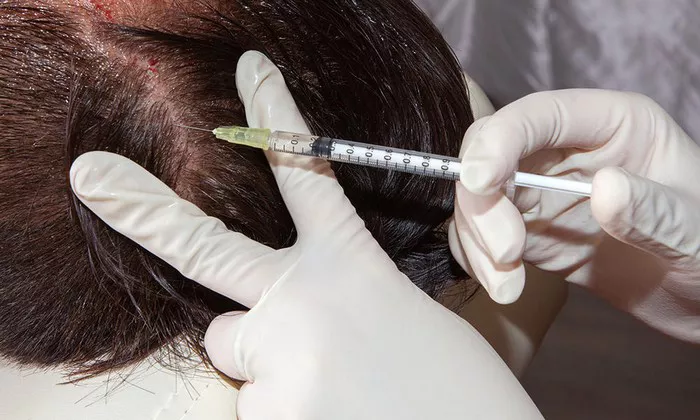In today’s society, hair loss is a common issue that plagues numerous individuals. Hair implant surgery has emerged as a glimmer of hope for many people seeking to regain their confidence. However, a question that often arises is: where exactly does the hair needed for hair implants come from? Today, we’ll delve deep into the sources of hair for hair implants.
Autologous Hair: The Most Common Choice
Autologous hair transplantation simply means using the patient’s own hair for the hair implant procedure. There are two main methods: Follicular Unit Extraction (FUE) and Follicular Unit Transplantation (FUT).
With FUE, a tiny circular punch tool is used to directly extract individual hair follicles from the donor area of the patient, usually the back or sides of the scalp. The hair in these areas has a special property – it is insensitive to androgens. So, even when transplanted to other areas, it can continue to grow and is less likely to fall out. One of the great advantages of this method is that the scars left in the donor area are minuscule and almost imperceptible.
On the other hand, FUT involves removing a strip of skin tissue with multiple hair follicles from the donor area. Then, in the laboratory, professionals meticulously dissect this strip into individual follicular units, which are then transplanted to the areas in need of hair implantation. The benefit of FUT is that it can obtain a relatively large number of hair follicles at one time, making it suitable for patients with extensive hair loss. However, it leaves a linear scar in the donor area.
The advantages of autologous hair transplantation are quite evident. Since the hair is taken from the patient’s own body, there is no risk of rejection. The body can readily accept these follicles as if they were originally there. Moreover, the texture, color, and growth direction of the transplanted hair can blend perfectly with the original hair, resulting in a natural and realistic appearance.
Allogeneic Hair: A Challenging Option
Allogeneic hair transplantation refers to using hair from other people for transplantation. The hair donors are generally close relatives or cadaver donors. In theory, this approach can provide a more abundant source of hair, especially for patients with insufficient autologous donor hair.
However, this method faces significant challenges. The most prominent problem is the immune rejection reaction. The human immune system will recognize the foreign hair follicles as invaders and launch an attack. This can lead to the failure of the hair follicles to survive, resulting in transplant failure. Additionally, it may trigger complications such as inflammation and infection. To reduce the risk of rejection, patients may need to take immunosuppressive drugs. But these drugs come with side effects, weakening the patient’s immune system and making them more vulnerable to other diseases.
Furthermore, allogeneic hair transplantation also involves ethical and legal issues. Obtaining hair from others requires strict adherence to ethical guidelines and legal regulations to ensure the informed consent of the donors or their families. Currently, due to these numerous difficulties, allogeneic hair transplantation is not widely used in practice.
Artificial Hair: An Option Still Under Exploration
With the development of technology, artificial hair has also come into the spotlight. Artificial hair is usually made of synthetic materials, such as various polymers. The aim is to mimic the appearance and characteristics of real hair.
Theoretically, artificial hair has some advantages. It can be mass – produced without being limited by donors. Moreover, the color, texture, and other characteristics of artificial hair can be precisely controlled according to requirements, meeting the personalized needs of different patients.
In reality, however, artificial hair transplantation still faces many problems. First, the feel of artificial hair is still quite different from that of real hair. It may not look or feel natural. Second, the human body may have an allergic reaction to the artificial materials, causing discomfort symptoms such as scalp itching and redness. In addition, the long – term stability of artificial hair remains to be verified. After a period of time, it may fade, deform, or experience other issues. Currently, artificial hair transplantation is mostly in the experimental stage and has not been widely applied clinically.
In conclusion, the sources of hair for hair implants each have their characteristics. Although autologous hair transplantation has the limitation of limited donor hair, it remains the most mainstream choice due to its high safety and natural results. Allogeneic hair transplantation and artificial hair transplantation have potential, but they still need to overcome many difficulties. If you are considering hair implantation, it is essential to communicate fully with a professional hair implant doctor. Based on your own situation, you can choose the most suitable hair source and hair implant plan.
You Might Be Interested In:
Why Didn’t Prince William Det A Hair Transplant?
From Bald to Bold: How Hair Transplants Are Boosting Confidence and Careers


